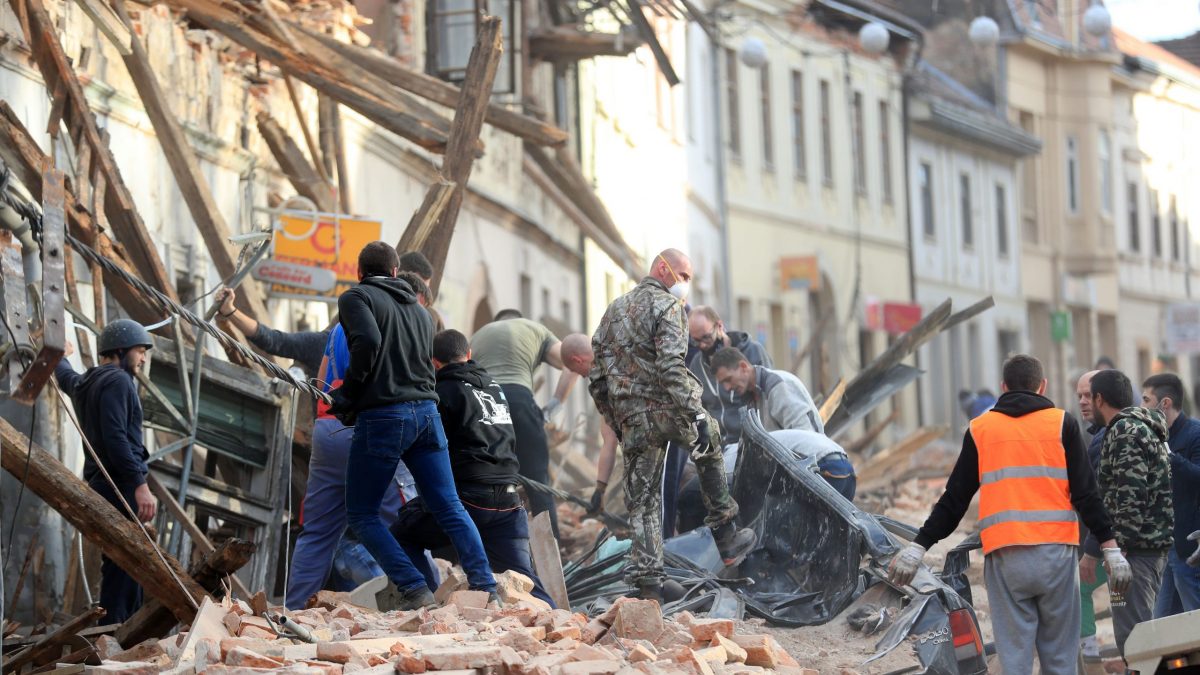On December 29, 2020, a strong earthquake measuring 6.3 on the Richter scale struck Petrinja, Sisak, and surrounding areas, causing significant damage. (Photo: Slavko Midzor/PIXSELL)
The response of the state, all levels of government, and institutions to the earthquake is fundamentally a matter of human rights protection—primarily the right to a home or dignified housing, but also the rights to safety, healthcare, work, water, and others, as witnessed over the past year.
Two catastrophic earthquakes— the first with a magnitude of 5 on the Richter scale on the morning of December 28, 2020, and the second, far more destructive at 6.2, at noon on December 29, 2020, exactly one year ago—hit the Sisak-Moslavina County area. In just moments, many citizens lost their homes, and unfortunately, seven people died.
These earthquakes, especially amid the ongoing pandemic, have significantly impacted human rights. Many citizens had their rights to family life and home, or dignified housing, personal safety, and access to numerous services restricted. The hardest hit were those already vulnerable before the earthquake: the elderly, single-person households, people of lower economic status, and families with many children.
One year later, residents of Sisak-Moslavina County continue to strongly feel the consequences. Unfortunately, many still live in damaged houses and buildings or in temporary shelters in their yards, while some have not returned to their homes but live elsewhere, including container settlements and other forms of substitute housing. Faster and more comprehensive reconstruction is still awaited. Citizens often lack information about their rights in the reconstruction process and how to exercise them. Particularly alarming is the research finding among those housed in container settlements that most not only doubt a quick reconstruction but predict they will live in containers for 6 to 10 years, with some expecting to die before their homes are rebuilt.
The devastating earthquakes have also exacerbated pre-existing problems such as poverty—mostly among the elderly who largely live alone—unemployment, inadequate public transportation that further limits access to health and social care, education, and more. Therefore, reconstruction must be approached systematically and comprehensively, serving not only material but also social and economic revitalization of the area.
Citizens living in the affected area, who still strongly feel the earthquake’s effects, must be enabled as soon as possible and to the greatest extent to enjoy all their rights—fulfilling their immediate living needs, especially through faster and more intensive restoration of the right to dignified housing.


